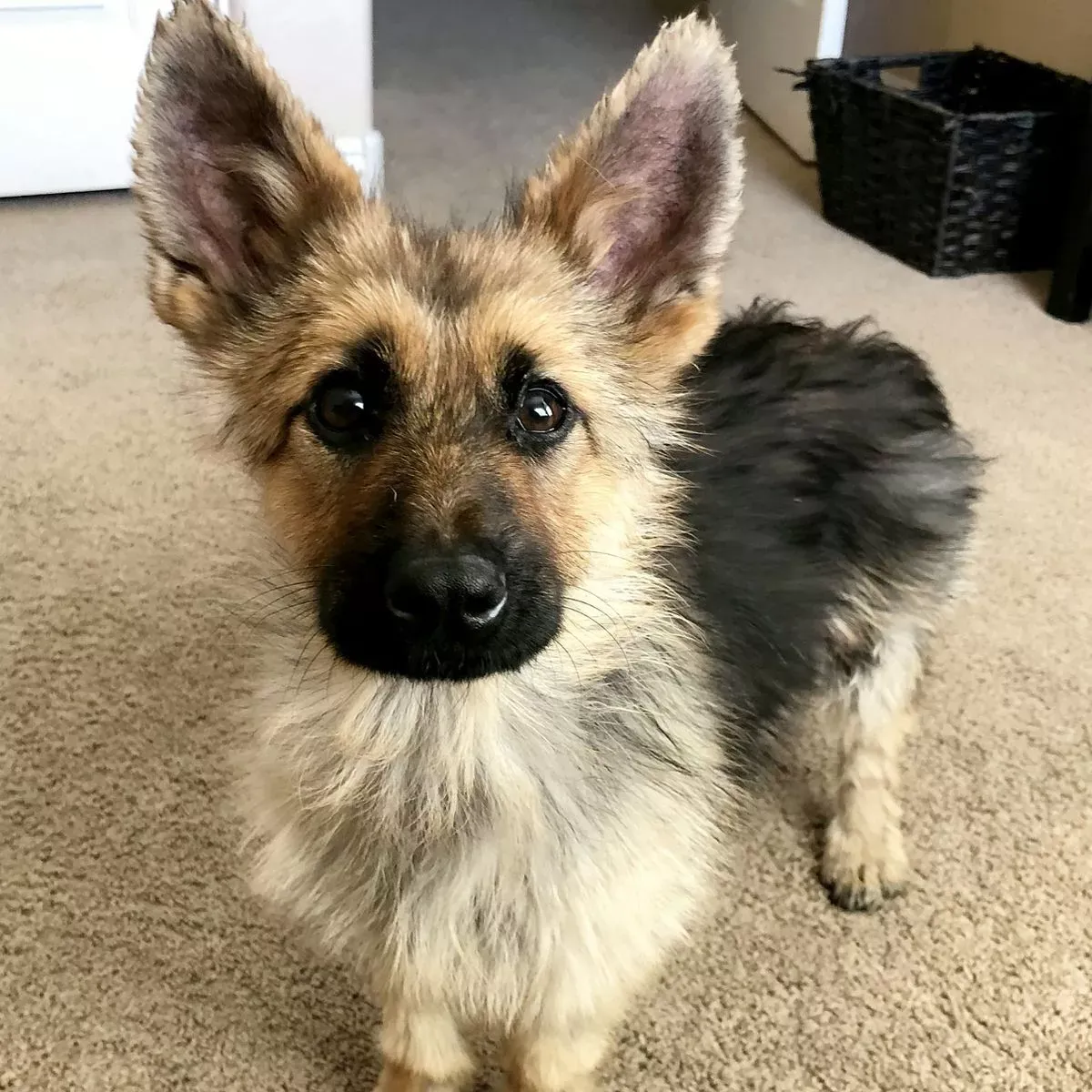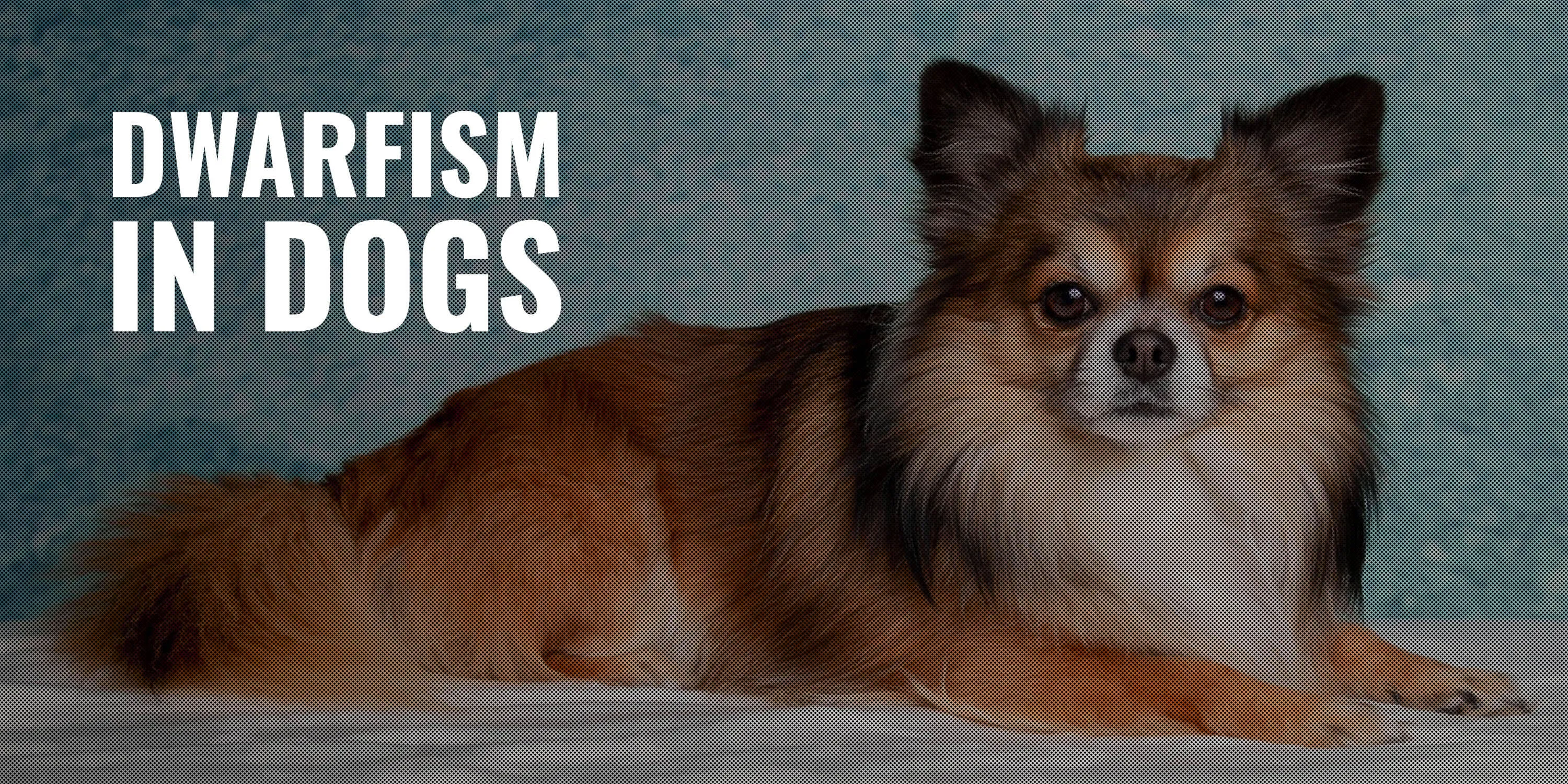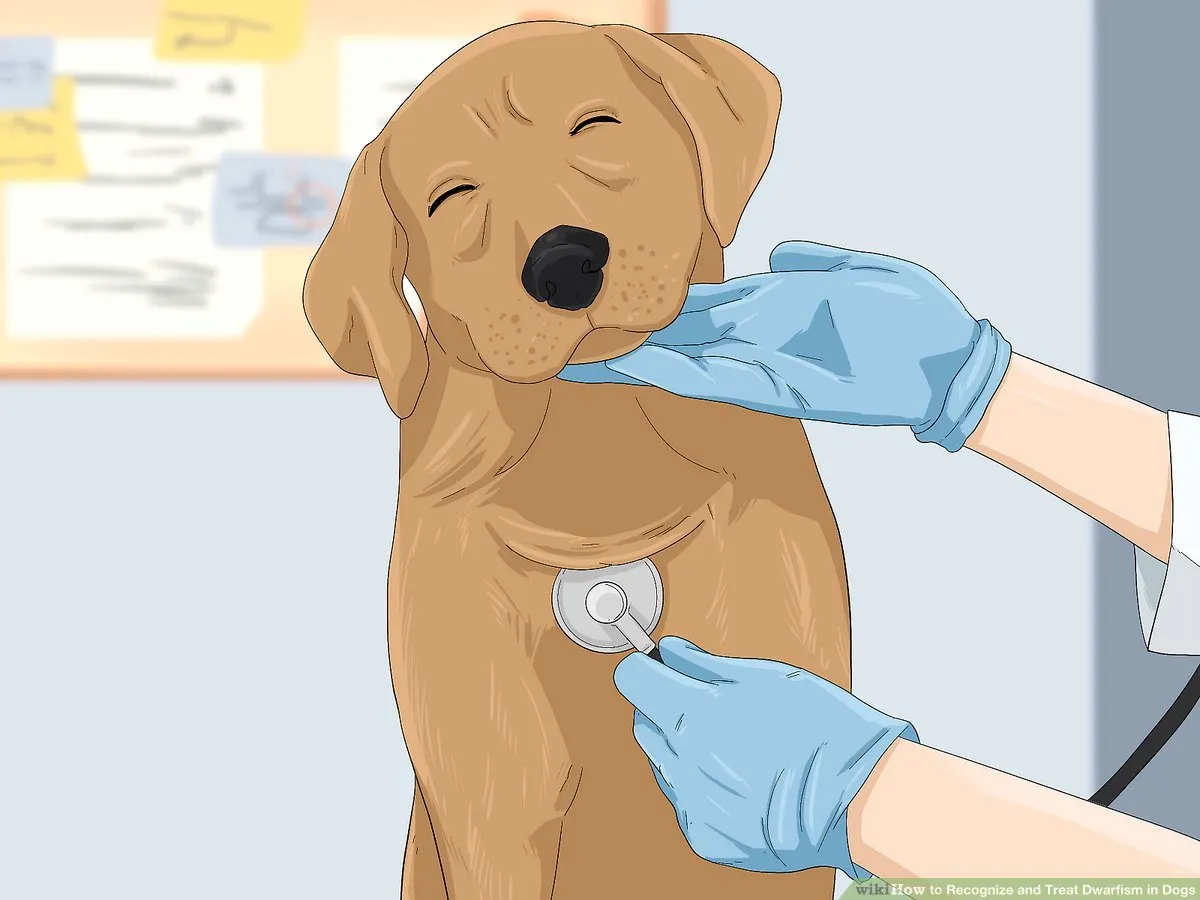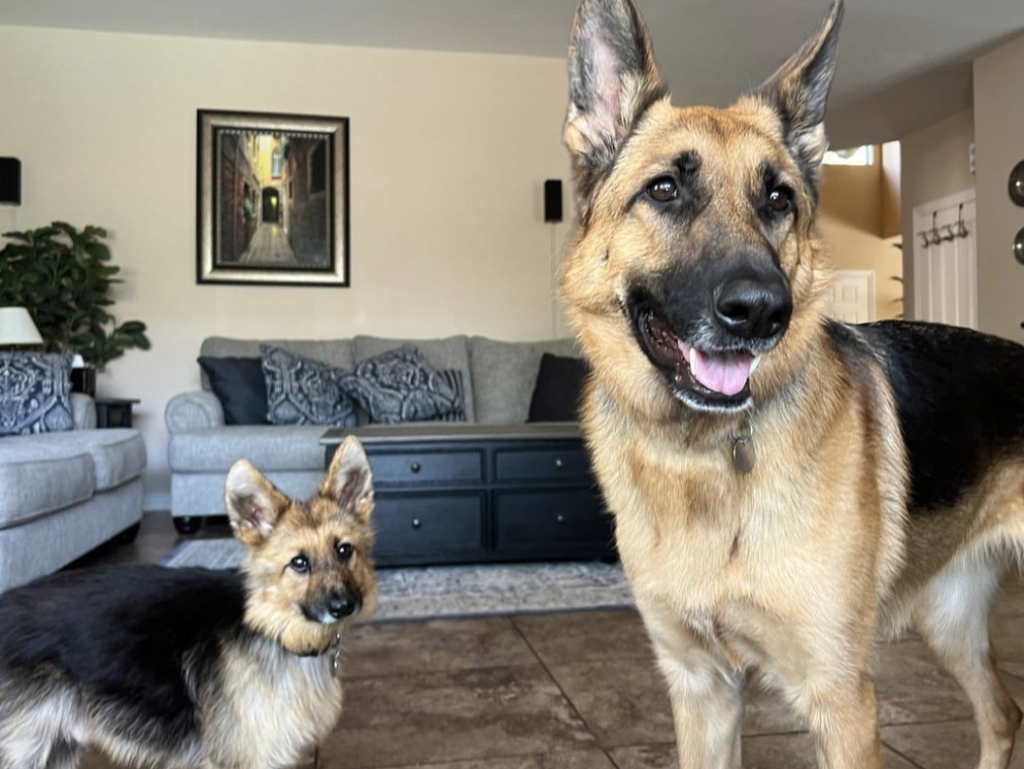German Shepherd dwarfism
is a beloved and versatile breed known for its intelligence, loyalty, and striking appearance. However, like every other breed, German Shepherd dwarfism can be vulnerable to positive genetic situations affecting their health and nicely-being.
One such condition is German Shepherd Dwarfism, a rare but noteworthy genetic disorder that impacts the growth and development of these remarkable dogs.
This article will explore German Shepherd Dwarfism in detail, shedding light on its causes, symptoms, and implications for affected dogs. Understanding this condition is crucial for breeders and owners to ensure the best care for their German Shepherds.
So, let’s delve into the world of German Shepherd Dwarfism and gain insights into this unique genetic variation.
How Do You Know If Your German Shepherd Has Dwarfism?
Identifying German Shepherd dwarfism can be challenging, especially during the early stages of a dog’s life. However, certain signs and characteristics can indicate the presence of this genetic condition. Here are some key indicators to help you recognize if your German Shepherd has Dwarfism:
- Disproportionate Body Structure: One of the primary characteristics of German Shepherd dwarfism is an abnormal body proportion. Affected dogs may have shorter legs and body lengths, resulting in a compact appearance. The limbs may appear stubbier and smaller than other German Shepherds of the same age.
- Slowed Growth: German Shepherds with Dwarfism often exhibit slower growth rates than unaffected individuals. German Shepherds’ size and weight may be noticeably smaller, and they may not reach the typical size milestones for their age. It’s important to note that not all small or slow-growing German Shepherds have Dwarfism, as there can be variations in growth rates within the breed.
- Unusual Facial Features: Some German Shepherd dwarfism may have distinct facial characteristics. These can include a shorter and broader snout, a rounded skull shape, or other subtle differences compared to typical German Shepherd facial features. However, these facial variations may not be present in all cases.
- Joint and Mobility Issues: Dwarfism can lead to skeletal abnormalities, such as shorter and thicker bones, affecting joint development and mobility. Affected German Shepherds may experience difficulties with movement, including stiffness, lameness, or an altered gait. These issues can become more pronounced as the dog ages.
It’s important to note that diagnosing German Shepherd dwarfism should be done by a qualified veterinarian who can thoroughly examine both physical characteristics and potential underlying genetic factors. Additionally, genetic testing can be conducted to confirm the presence of specific gene mutations associated with Dwarfism in the breed.
If you suspect that your German Shepherd has dwarfism, consult with a veterinarian experienced in canine genetics or a veterinary specialist. They can provide a proper diagnosis, offer guidance on managing the condition, and ensure your dog receives appropriate care and support throughout their life.
How Long Do Dwarf German Shepherds Live?

German Shepherd dwarfism is a genetic condition that can impact German Shepherd health and lifespan. While it’s important to remember that individual cases may vary, German Shepherd dwarfism typically has a shorter lifespan than unaffected German Shepherds.
On average, the lifespan of a German Shepherd dwarfism can range from 8 to 10 years. However, some may live longer with proper care and management of associated health issues. It’s worth noting that this lifespan estimate is generally shorter than the average lifespan of a healthy, non-affected German Shepherd, which typically ranges from 10 to 14 years.
German Shepherd dwarfism may be more susceptible to certain health problems due to their skeletal and developmental abnormalities. These can include joint problems, spinal complications, and other related conditions. Regular veterinary care, including routine check-ups and monitoring, can help address these concerns and optimize their well-being.
While German Shepherd dwarfism may have a shorter lifespan, it is important to pay attention to imparting them a high quality of life when they are with us. Ensuring the right nutrients, exercise, and a supportive environment that minimizes pressure and strain on their skeletal machine can improve their standard fitness and toughness.
Consulting with a knowledgeable veterinarian with experience with German Shepherd dwarfism can provide valuable guidance on managing their specific needs and maximizing their quality of life. They can help develop a tailored care plan and offer recommendations to address any potential health issues associated with German Shepherd dwarfism.
Are Mini and Dwarf German Shepherds The Same?
No, Miniature German Shepherds and German Shepherd dwarfism are not the same.
Miniature German Shepherds are typically the result of intentionally breeding smaller-sized German Shepherds or introducing genes from smaller breeds into the German Shepherd lineage. The goal is to produce German Shepherds that are smaller in size but still retain the appearance and characteristics of the standard German Shepherd.
These smaller-sized German Shepherds are often bred to meet the demand for smaller companion dogs.
On the other hand, German Shepherd dwarfism has a genetic condition called Dwarfism, which affects their growth and skeletal development. Dwarfism is caused by specific gene mutations that interfere with normal bone growth, resulting in shorter limbs and other skeletal abnormalities.
German Shepherd dwarfism has a compact and disproportionate body structure due to these genetic factors.
It’s important to note that breeding for German Shepherds is a deliberate process. In contrast, Dwarfism is an inherited genetic condition that can occur spontaneously. German Shepherds with dwarfism are born with this condition, while Miniature German Shepherds are selectively bred for their smaller size.
While Miniature German Shepherds are smaller than the standard size, they typically do not exhibit the same skeletal abnormalities or health concerns associated with Dwarfism. German Shepherd dwarfism, on the other hand, may experience various health issues related to their skeletal structure and require specialized care.
Suppose you are considering a Miniature or German Shepherd dwarfism. In that case, it’s important to research. It consults with reputable breeders who prioritize the health and well-being of their dogs. Understanding the differences between these variations can help you make an informed decision and provide the appropriate care for your future companion.
What Causes a GSD To Be Born With Dwarfism?

German Shepherd dwarfism is primarily caused by specific gene mutations that affect their growth and skeletal development. These mutations can be inherited from one or both parents and are responsible for disrupting the normal process of bone growth.
The exact genetic mutations that lead to German Shepherd dwarfism are still being studied, and multiple genes may be involved. However, one known gene associated with Dwarfism in the breed is the COL9A2 gene. Mutations in this gene can interfere with the production of collagen.
This essential protein provides structure and strength to bones and other connective tissues.
When the COL9A2 gene is affected by a mutation, it can disrupt the growth plates in the limbs’ long bones, resulting in shorter and thicker bones. This stunts the overall growth and leads to the characteristic compact body structure observed in German Shepherd dwarfism.
It’s important to note that German Shepherd dwarfism is a hereditary condition, meaning it can be passed down from parent dogs to their offspring. However, the exact mode of inheritance and genetic mechanisms involved can vary.
Breeders who are aware of this condition and prioritize the health of their breeding dogs can take steps to avoid producing puppies with Dwarfism by not breeding dogs known to carry the gene mutation.
Genetic testing is available to identify whether a German Shepherd carries the gene mutation associated with Dwarfism. Responsible breeders can utilize such testing to make informed breeding decisions and reduce the incidence of Dwarfism in their breeding programs.
Understanding the genetic basis of German Shepherd dwarfism can help breeders and veterinarians develop strategies for managing and reducing the occurrence of this condition while promoting the overall health and well-being of the breed.
Pituitary Dwarfism in German Shepherd Dogs?
Pituitary Dwarfism is a specific type of Dwarfism that can affect German Shepherd Dogs. It is a rare genetic disease because of the underdevelopment or malfunctioning of the pituitary gland, which is placed at the base of the mind and responsible for generating numerous hormones.
In German Shepherds with Pituitary Dwarfism, the pituitary gland does not produce adequate amounts of growth hormone, resulting in impaired growth and development. It is a rare genetic ailment attributable to the underdevelopment or malfunctioning of the pituitary gland, placed at the bottom of the brain, and responsible for this situation is commonly present from birth or becomes apparent all through the early stages of a canine’s life.
Here are a few key traits and signs related to Pituitary Dwarfism in German Shepherds:
- Stunted Growth: Dogs with Pituitary Dwarfism experience significantly slower growth than unaffected German Shepherds. They often have shorter stature and may not reach the typical size milestones for their age.
- Delayed Dentition: The development of teeth in dogs with Pituitary Dwarfism can be delayed. They may have a slower eruption of permanent teeth, which can be smaller and delayed in development.
- Thickened Skull: German Shepherds with Pituitary Dwarfism may exhibit a thicker skull and a rounder, more “puppy-like” facial appearance than unaffected individuals.
- Delayed Sexual Maturity: Dogs with Pituitary Dwarfism may experience delayed or incomplete sexual maturity. Male dogs may have smaller testicles, and females may have irregular heat cycles or difficulty conceiving.
- Various Health Issues: Pituitary Dwarfism can also lead to other health problems, including poor coat quality, skin issues, dental abnormalities, and increased susceptibility to infections.
It’s important to note that while Pituitary Dwarfism affects the growth and development of German Shepherds, it does not typically impact their intelligence or temperament.
Suppose you suspect that your German Shepherd may have Pituitary Dwarfism. In that case, it’s crucial to consult a veterinarian who can thoroughly examine and conduct appropriate diagnostic tests. These may include hormone level evaluations and genetic testing to confirm the diagnosis.
Treatment options for Pituitary Dwarfism are limited, and management focuses on providing supportive care and addressing associated health issues to ensure the best quality of life for the affected dog.
Can you fix Dwarfism in dogs?

There is no known cure for genetic Dwarfism in dogs, including German Shepherds. Genetic Dwarfism is a hereditary condition caused by specific gene mutations that affect the growth and development of the dog. These gene mutations cannot be reversed or fixed.
Dwarfism in dogs, depending on the specific genetic condition, can lead to various health challenges and complications, such as skeletal abnormalities, joint problems, and other related issues. While the underlying genetic cause cannot be corrected, the focus is on managing the associated symptoms and promoting the best possible quality of life for affected dogs.
Management of Dwarfism in dogs typically involves:
- Veterinary Care: Regular veterinary check-ups are important to monitor the dog’s overall health and address any specific issues related to Dwarfism. This can include managing joint problems, providing appropriate nutrition, and addressing other health concerns.
- Specialized Diet: A well-balanced diet tailored to the dog’s specific needs, including proper nutrition for bone and joint health, can be beneficial. Consultation with a veterinarian or veterinary nutritionist can help determine the best dietary approach for a dog with Dwarfism.
- Exercise and Physical Therapy: Regular, low-impact exercise can help maintain muscle tone, support joint health, and prevent obesity. Physical therapy techniques like hydrotherapy or controlled exercises may also be recommended to manage mobility issues.
- Supportive Care: Providing a supportive and comfortable environment is essential for dogs with Dwarfism. This can include providing soft bedding, ramps, or stairs to minimize strain on joints and adapting the living space to accommodate their needs.
It’s important to note that Dwarfism in dogs can vary in severity and presentation. Each case should be assessed and managed individually, considering the specific needs and challenges of the affected dog. Consulting with a veterinarian experienced in managing genetic conditions and Dwarfism can provide valuable guidance and support in caring for a dog with this condition.
Do dogs with Dwarfism live long
The lifespan of dogs with Dwarfism can vary depending on the underlying cause and their specific health challenges. Dwarfism itself does not necessarily determine the lifespan of a dog. However, it’s important to note that some types of Dwarfism can be associated with certain health issues that may impact longevity.
In general, dogs with Dwarfism, including breeds like German Shepherds, may have a slightly shorter lifespan than unaffected individuals of the same breed. This is often due to the increased risk of associated health problems, such as skeletal abnormalities, joint issues, and other potential complications.
However, with proper care, regular veterinary check-ups, and appropriate management of any health concerns, dogs with Dwarfism can still lead happy and fulfilling lives. A supportive environment, including a balanced diet, exercise, and addressing specific needs related to their condition, can help optimize their overall well-being.
It’s important to consult a veterinarian experienced in managing genetic conditions and Dwarfism to develop a tailored care plan for an individual dog. They can provide guidance on health management, address any potential complications, and help ensure the best possible quality of life for your dog throughout its lifespan.
How do you test a dog for Dwarfism?

Testing a dog for Dwarfism typically involves a combination of physical examination, diagnostic imaging, and genetic testing. Here are the common methods used to diagnose Dwarfism in puppies:
- Physical Examination: A veterinarian will conduct a thorough bodily exam of the dog, paying near interest to their frame shape, limb period, and every other seen symptom of disproportionate growth. The veterinarian can also examine the dog’s ordinary health, which includes checking for any related health problems that may be a gift.
- Diagnostic Imaging: Radiographs (X-rays) can help assess the dog’s skeletal structure. These images can reveal any abnormalities in bone development, such as shortened or thicker bones. Radiographs may also help identify any joint issues or other skeletal complications associated with Dwarfism.
- Hormone Level Evaluation: In certain cases, blood tests may be performed to evaluate hormone levels in the dog. This can help determine if any hormonal imbalances contribute to Dwarfism, such as deficiencies in growth hormone or other related hormones.
- Genetic Testing: Genetic testing is valuable for identifying specific gene mutations associated with Dwarfism in dogs. Through a DNA sample, usually obtained via a blood sample or cheek swab, genetic testing can confirm the presence of gene mutations known to cause Dwarfism in specific breeds. Genetic testing can help determine the type of Dwarfism and provide insights into the mode of inheritance.
It’s important to consult a veterinarian experienced in genetic conditions and Dwarfism for appropriate testing and diagnosis. They can guide you through the process, explain the available testing options, and interpret the results to provide a definitive diagnosis of Dwarfism in your dog.
Caring for dogs with dwarfism :
Caring for dogs with dwarfism requires special attention and consideration to ensure their well-being and quality of life. These adorable pups may have unique physical challenges due to their shortened limbs and stature. Providing a safe and comfortable environment is crucial, with careful consideration of the height of their food and water dishes, as well as their beds.
Regular exercise tailored to their abilities is essential to maintain a healthy weight and prevent joint strain. Regular veterinary check-ups are crucial to monitor their health and address potential issues. Above all, showering them with love, patience, and understanding will create a happy and fulfilling life for these lovable companions.
Which dog breeds are more likely to have dwarfism?
Dwarfism in dogs is relatively rare, but certain breeds are more prone to this genetic condition due to their selective breeding for specific physical characteristics. Some of the dog breeds that are more likely to have dwarfism include:
Dachshund: Dachshunds are known for their long bodies and short legs, resulting from a genetic mutation linked to dwarfism.
Corgi: Both Pembroke Welsh Corgis and Cardigan Welsh Corgis can carry the gene for dwarfism, which results in their distinctive short legs.
Basset Hound: Basset Hounds have a characteristic short-legged and long-bodied appearance due to genetic factors associated with dwarfism.
French Bulldog: Some French Bulldogs can exhibit dwarfism, leading to a compact and muscular build.
Pekingese: Pekingese dogs are prone to achondroplasia, a form of dwarfism affecting bone development.
Scottish Terrier: Scottish Terriers can also carry the gene for dwarfism, leading to their low-slung appearance.
Shih Tzu: Some Shih Tzus may exhibit dwarfism, resulting in a compact and sturdy build.
It’s important to note that not all individuals of these breeds will have dwarfism, as it depends on their genetic makeup and breeding. Responsible breeders work to minimize the occurrence of congenital conditions like dwarfism by careful selection and health testing of their breeding dogs. Suppose you’re considering adopting a dog of any breed. In that case, it’s essential to research and choose a reputable breeder or consider adopting from a rescue organization to ensure your future furry companion’s best health and well-being.
What you need to know about the treatment for dwarfism in dogs
it’s important to note that there is no specific treatment to cure dwarfism in dogs, as it is a genetic condition. Dwarfism in dogs is often caused by a genetic mutation that affects bone development, resulting in shortened limbs and stature. Since the disease is usually congenital, medical intervention cannot reverse or eliminate it.
However, while there is no cure, there are certain considerations and care practices that can help manage the well-being of dogs with dwarfism:
Regular Veterinary Check-ups: Dogs with dwarfism may be prone to certain health issues, such as joint problems or spinal abnormalities. Regular veterinary check-ups are essential to monitor their health and address potential concerns early on.
Weight Management: Maintaining a healthy weight is crucial for dogs with dwarfism to prevent additional strain on their bones and joints. Proper nutrition and regular exercise, tailored to their abilities, can help prevent obesity and support overall well-being.
Safe Environment: Create a safe and comfortable living space that accommodates their unique needs. Consider using elevated food and water dishes to reduce strain on their necks and backs, and provide a bed or resting area that is easily accessible.
Physical Activity: Engage in low-impact exercise suitable for their stature and physical limitations. Avoid activities that may cause excessive stress on their joints or spine.
Breeding Considerations: If you are a breeder, you must know the potential for dwarfism in certain breeds and work to minimize its occurrence through responsible breeding practices.
Monitor for Complications: Look for any signs of discomfort, pain, or mobility issues in dogs with dwarfism. If you notice any concerning symptoms, consult your veterinarian promptly.
It’s crucial to remember that each dog with dwarfism is an individual, and their specific needs may vary. Therefore, working closely with a veterinarian who can provide personalized guidance and care for your dog’s unique condition is best.
As advancements in veterinary medicine continue, new treatment options or therapies may be available. If you have a dog with dwarfism, staying informed about the latest research and veterinary developments can be beneficial in providing the best care possible for your furry friend.
Final Thought
In conclusion, Dwarfism in dogs, including German Shepherds, is a complex genetic condition that affects their growth and skeletal development. While there is no known cure for Dwarfism, proper management, and care can help affected dogs lead happy and fulfilling lives.
Understanding the symptoms and symptoms of Dwarfism, searching for veterinary care, and imposing appropriate measures can contribute to the well-being of puppies in this situation. Regular veterinary test-ups, specialized diets, exercise tailored to their wishes, and supportive surroundings are essential in optimizing their usual fitness and great life.
Genetic testing can provide valuable insights into the specific gene mutations associated with Dwarfism and aid in breeding decisions to reduce the condition’s occurrence in future generations. Responsible breeding practices and consulting with knowledgeable professionals can help minimize the risk of passing on the genetic mutation.
While Dwarfism may present certain challenges and potential health issues, with love, care, and proper management, dogs with Dwarfism can still lead fulfilling lives as cherished family members.

